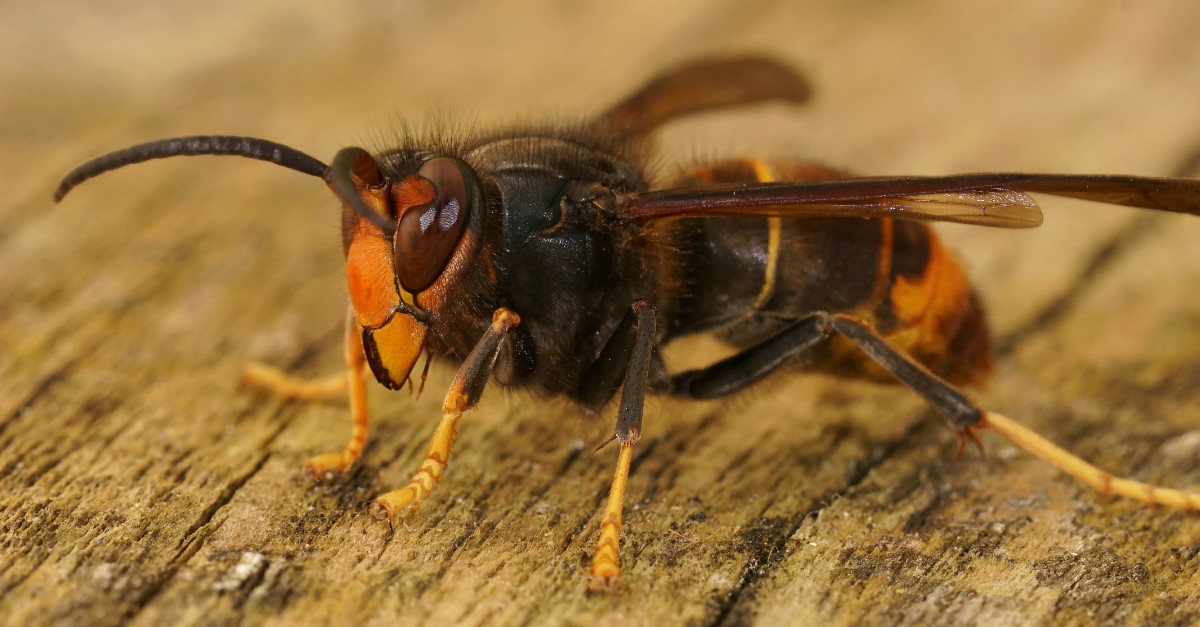
Stop the Yellow-Legged Hornet and Protect Honeybees
The North Carolina Department of Agriculture and Consumer Services is asking residents to report sightings of early nests constructed by the invasive Yellow-legged hornet. Although this hornet species hasn’t been discovered in North Carolina yet, it has been spotted in South Carolina and Georgia. Though it hasn’t been seen in North Carolina yet, it won’t be long until it makes its way north if it isn’t already here.
Yellow-legged hornets pose severe threats to native honeybees and managed bees. Attracted by the odor of pheromones emitted by honey bee hives, yellow-legged hornets will wait outside the hive for bees to return. As a result of “carpeting” or ambushing the returning honey bee workers, hornets can expect to sting, kill, and eat hundreds of worker bees as they attempt to defend their hives.
Continue reading to learn how to identify yellow-legged hornets, protect honeybees in the Carolinas, and contact Clark’s Pest Control for prompt hornet eradication around your home and business.
Features and Characteristics of Yellow-Legged Hornets
Queen and worker hornets share many features except for their size. Worker hornets are usually smaller, averaging about 1/2 to 3/4 inch in length. Queens are slightly bigger, averaging around one inch in length. During late summer, queens and workers may grow to equal lengths.
Other distinguishing characteristics of yellow-legged hornets include:
- Solid Black Thorax
- Orange heads
- Reddish-brown antennae
- Bright yellow legs
- Yellow-banded abdomens
- Brown wings extending past the abdomen
- One stinger at the bottom of the abdomen (all hornets can sting multiple times using their single stinger)
Unless you are an entomologist or familiar with yellow-legged hornet features, it can be challenging to accurately identify this type of hornet. The bald-faced hornet, the cicada killer hornet, and yellow jackets resemble the yellow-legged hornet in size, shape, and color.
The best way to know if you have a population of yellow-legged hornets terrorizing honey bees on your property is to contact Clark’s Pest for professional hornet control in the Carolinas.
Recognizing Yellow-Legged Hornet Nests
These hornets build egg-shaped or oval paper nests in trees, eaves, and other overhead locations. Early (embryo) nests are small and brown, about the size of a tennis ball. Mature nests are large enough to house thousands of yellow-legged hornets.
Unlike most social wasps that build just one nest yearly, the yellow-legged hornet is a bit of an overachiever. After emerging from hibernation in spring, the queen makes her embryo nest to raise her first batch of worker hornets. Once those workers hatch, they construct a bigger primary nest around the original early nest.
During summer, worker hornets build a new nest in a tall tree or other elevated site. The queen and the workers relocate to the new nest to continue populating the colony with future male workers and queens. Older workers and the queen die as the fall weather approaches.
Protect Declining Honeybees in the Carolinas With Clark's Hornet Control Treatment
Our experienced team can identify all hornet species, locate hornet nests, and develop a foolproof plan to eliminate the infestation as quickly as possible. Our treatment products are safe for pets and humans and our pest control methods have been certified by the EPA.
Call Clark’s Pest Control today if you think you’ve spotted yellow-legged hornets on your property.
